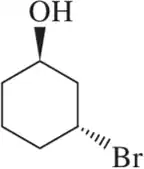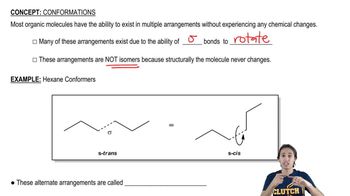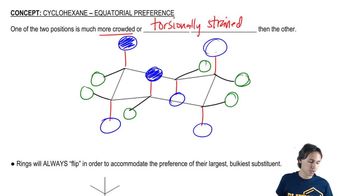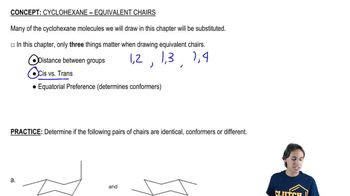Draw two chair conformations of the molecules below. Indicate which is most stable.
(a)

 Verified step by step guidance
Verified step by step guidance Verified video answer for a similar problem:
Verified video answer for a similar problem:



 4:02m
4:02mMaster Equatorial Preference with a bite sized video explanation from Johnny
Start learning